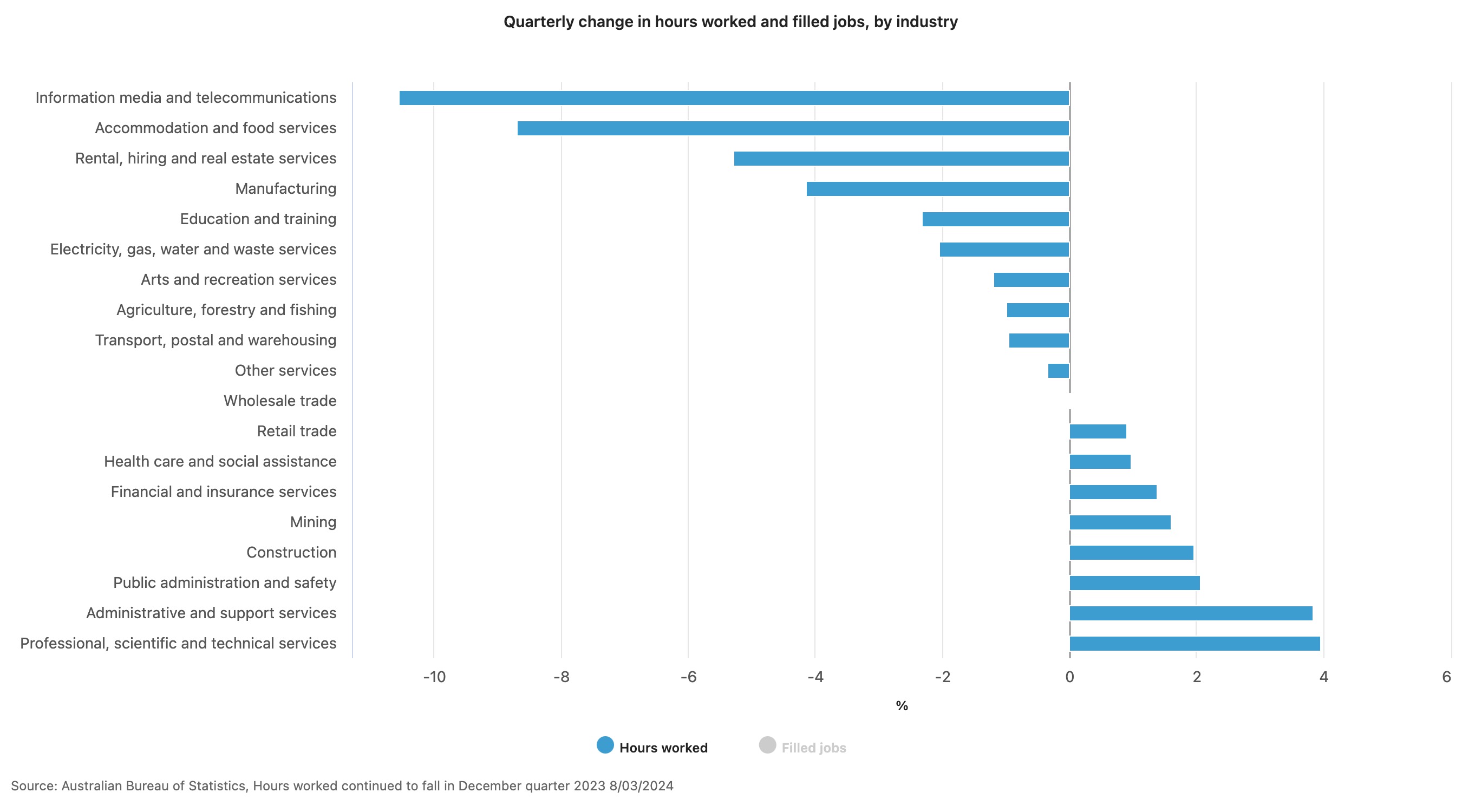
10 out of 19 industries saw decrease in total number of hours worked

The number of hours worked in Australia continued its declining trend in the December quarter of 2023 after going down to 5,863 million hours, according to the Australian Bureau of Statistics (ABS).
The latest ABS data on Friday revealed that this is a 0.3% quarterly decline, equivalent to a 15.9-million hours decrease.
"Apart from early 2020, around the beginning of the COVID-19 pandemic, December quarter 2023 is the first time we've seen a fall in hours worked for two quarters in a row in about a decade - since March quarter 2014," said Bjorn Jarvis, ABS head of labour statistics, in a statement.
"However, it is also important to remember that the last couple of quarters were on the back of particularly strong growth in hours worked through the 2022-23 financial year, at 6.6%.
Annually, the number of hours worked in the December 2023 quarter remains two per cent higher than the hours worked in the same period a year ago, according to the report.
Hours worked by industry
By industry, 10 out of 19 sectors saw a quarterly decline in the number of hours worked. The biggest drops were recorded in the:
The industries that logged an increase in hours worked include the professional, scientific, and technical services (4%) and the administrative and support services (3.8%).

Filled jobs, vacancies
Meanwhile, filled jobs went up by 57,000 (0.4%) in the December quarter, as it also registered an annual increase of 428,000 jobs (2.8%).
The ABS, however, pointed out the slower quarterly and annual growth in filled jobs.
"The slower growth seen in filled jobs, together with the continued reduction in hours worked, suggests some moderation in the Australian labour market since the middle of 2023," Jarvis said.
Job vacancies also dropped 5.6% in the December quarter, according to the ABS, making the proportion of total jobs that were vacant to drop 2.4%.
"Five consecutive falls in both job vacancies and the proportion of vacant jobs shows an easing in demand for labour from the peaks we saw in September quarter 2022. However, both measures are still well above their pre-pandemic levels, which suggests that the labour market continues to remain relatively tight despite these falls," Jarvis said.